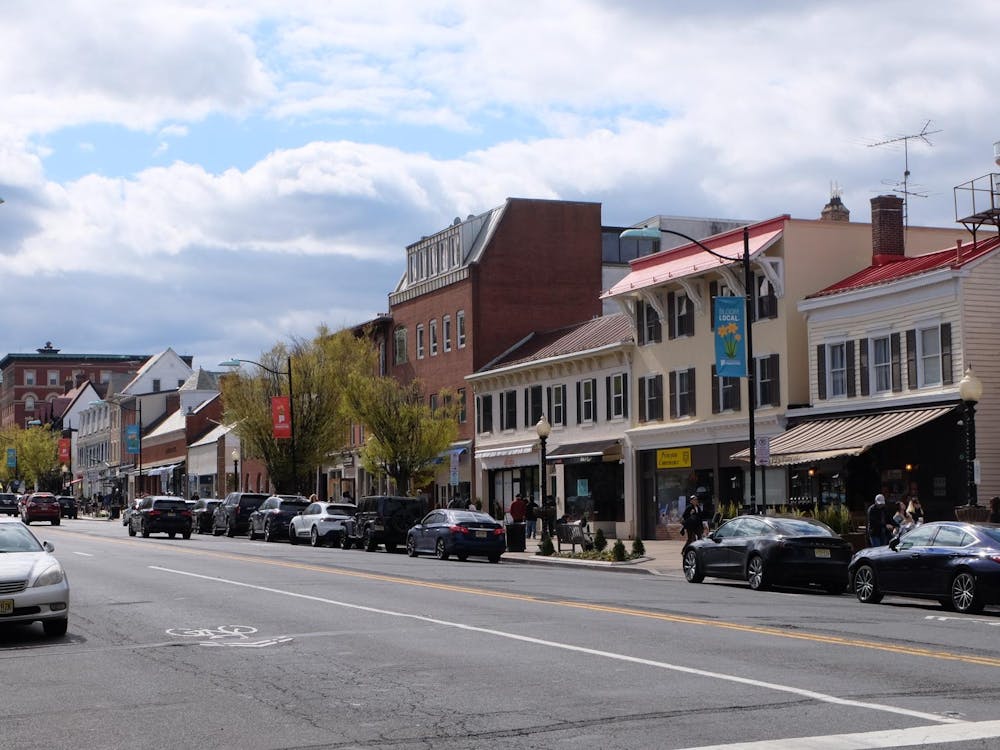In a Monday evening panel discussion titled “The Art of Sustainability! Why We Need Art to Make Progress on Environment,” participants Fritz Haeg, Subhankar Banerjee and Jenny Price ’85 discussed how manipulating art can enact changes in environmental policies and practices.
Haeg, an architect and designer, examined the cultural and environmental significance of the American front lawn — what he calls the most “public, visible, theatrical symbol on the urban landscape” — through his project Edible Estates. He compared lawns to the use of monoculture, the agricultural practice of growing only one crop on land, because both create “inherently unhealthy” environments that lack in plant diversity.
However, Haeg also explained that the public nature of the front lawn makes it an ideal area for reinvigorating the practice of growing food on a small-scale, sustainable level. Through Edible Estates, he reached out to several homeowners throughout the United States and replanted their front lawns, transforming what were once flat expanses of grass into lush landscapes harboring fruits and vegetables for families to consume.
Haeg also established museum exhibits in the cities of the participating families that track the progress of these gardens and provide workshops on topics ranging from composting to cooking, he said.
The ultimate goal of Edible Gardens, Haeg explained, is to redefine Americans’ conceptions of agriculture and the natural environment by using the lawn as a public theater.
“So much about the lawn is about control and domination, especially in Americans,” Haeg said. “There’s something in us that feels that threat of wildness, and a lot of my work is centered around weaving a sense of wildness into our cities; I’m looking for locations where a garden will be a shock.”
Banerjee, who is a climate change and wildlife conservation activist, discussed his experiences with these issues through photography in the Arctic. While many American politicians have characterized this region as a “barren wasteland,” Banerjee explained that the Arctic is actually a place of “global interconnectedness.”
To illustrate this, he described the yearly migration of thousands of birds to the area. Unfortunately, he explained, the majority of the industrial toxins present in the world’s oceans eventually travel to the Arctic regions and affect the animals and humans that live there.
Banerjee emphasizes a variety of themes in his photography. For example, he explores color because these areas are generally thought of as white, monochromatic spaces.
He concluded that photography has encouraged him to go beyond his art and become involved in political activism.
“Art helps me to engage,” he said. “It’s not really conceptual; it’s more participation.”
Banerjee’s work has been exhibited in more than 50 galleries and museums in the United States, Europe and Mexico. He is currently editing an anthology titled “Arctic Voices: Resistance at the Tipping Point,” which is to be published in 2012, and is serving as the director’s visitor at the Institute for Advanced Study in Princeton for fall 2011.

Price, the co-founder of the Los Angeles Urban Rangers Art Collective and the Anschutz Distinguished Fellow in American Studies, made a humorous entrance to the panel discussion. Dressed in her khaki ranger’s uniform, she described the University environment to the audience like she would a national park, mentioning that its primary inhabitants were “tigers that engaged in texting, bickering and arch-singing.”
As Ranger Jenny, a member of the Urban Rangers, Price has sought to increase public use of Malibu beaches. Though all California state beaches are public areas, 20 of the 27 miles of Malibu beaches have been artificially closed off to visitors by beach homeowners who have deemed the land “private.”
Rather than directly engaging in political debate to make these beaches public, Price has advocated what she calls a more effective and “gentler” approach. She organizes tours to these beaches where participants engage in “signwatching” — which involves spotting signs that homeowners have put up to keep visitors off the beaches — along with a potluck on the sand a mere 100 yards away from housefronts.
“The most useful way to make [beaches] public is to have people on them,” Price said, adding that this approach is really “an art project” because it fosters a new type of “storytelling.”
Ultimately, the three panelists agreed that their work presented issues with the hopes of engaging the public and encouraging them to adopt more environmentally friendly practices.
“We’re asking audiences to experience these issues on the ground,” Price said. “In many ways, we’re asking them to literally act out more sustainable ways of inhabiting.”
The panel discussion was held in the Lewis Center for the Arts.







